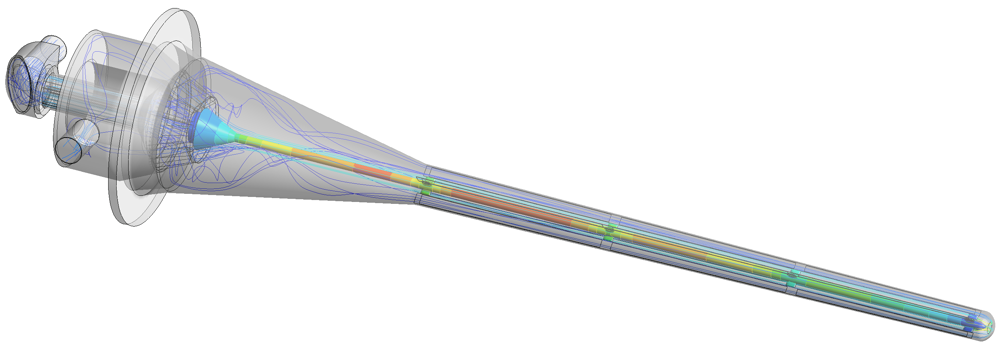The Long Baseline Neutrino Facility (LBNF) at Fermilab near Chicago in the US will direct an intense pulsed beam of neutrinos to the Deep Underground Neutrino Experiment (DUNE) at South Dakota’s Sanford Laboratory.
Results from the experiment may indicate why the Universe is made of matter, detect a supernovae in our galaxy and could observe proton decay.
The UK team - which is based at the Science and Technology Facilities Council (STFC)’s Technology Department at Oxfordshire’s Rutherford Appleton Laboratory (RAL) is producing the so-called target for the system, a device that will be able to convert the most intense pulsed proton beam in the world into a beam of neutrinos.

This device works rather like a crash pad for powerful proton beams: when protons strike the target a particle shower is produced and some of the newly born particles decay or transform into neutrinos, whose rare interactions with matter are then captured and analysed.
The target is effectively a 1.5m long graphite rod, but although simple in principle developing a device that produces the highest possible flux of neutrinos presents a number of key engineering challenges.
The target will have to handle the full intensity of a tightly focused, high-energy proton beam; heat needs to be removed from the target using high velocity helium gas, and the device has to survive shock vibrations similar to being attached to a rocket and launched into space every second.

To address challenges, the team is designing and supplying key components of the target cooling system, and for the target itself are using nuclear grade graphite. Most other materials would melt or disintegrate after a single beam pulse, with a temperature rise of around 100°C in 10 microseconds.
Another part of the project is to supply a remotely operable target exchange system that can replace the target’s highly radioactive components. Ideally, the targets produced by STFC will have a lifetime of at least a year before they will need to be replaced.
To help achieve as long of a lifetime as possible, STFC engineers and Fermilab colleagues started an international collaboration, Radiation Damage In Accelerator Target Environments (RaDIATE) which now has more than a dozen international institutes. RaDIATE applies the expertise and facilities of nuclear materials scientists to the challenging environment faced by such components, with every atom along the beam centreline being displaced several times a year.
The current LBNF-UK target project follows a successful £1.5 million 4-year design study carried out by the same team in the Technology Department of STFC’s RAL in Oxfordshire. Phase 2 will now use the remaining £4.5 million allocation to deliver the target to the LBNF facility in March 2027.
“This is a fantastic opportunity to showcase what we do at STFC, and to promote UK manufacturing expertise on the international stage,” commented Phase 2 project manager Peter Loveridge.
More from The Engineer











Radio wave weapon knocks out drone swarms
I hope they have assessed how easy it is to shield a drone against the attack. Hopefully the shielding would add too much weight.